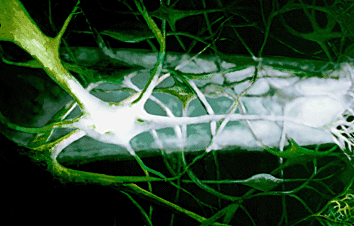Mice whose brains had lost a large number of neurons due to neurodegeneration regained long-term memories and the ability to learn after their surroundings were enriched with toys and other sensory stimuli, according to new studies by Howard Hughes Medical Institute researchers. The scientists were able to achieve the same results when they treated the mice with a specific type of drug that encourages neuronal growth.

Continue reading “Memory Restored In Mice Through Enriched Environment: New Hope For Alzheimer’s”



